If this is your first time visiting Yosemite National Park, then you may be finding planning your trip there a little overwhelming. It’s not uncommon for first-time visitors to feel that way.
Which is why I’ve compiled my top Yosemite National Park tips.
I’m James Ian and I’m a national park expert and I’m here to share these tips on visiting Yosemite National Park with you.
Subscribe to daily national parks planning tips, travel inspiration and trip ideas and I’ll send you a free PDF of this Guide:
10 Tips For Visiting Yosemite National Park
No time right now to read these tips for visiting Yosemite National Park? Pin It and save it for later:
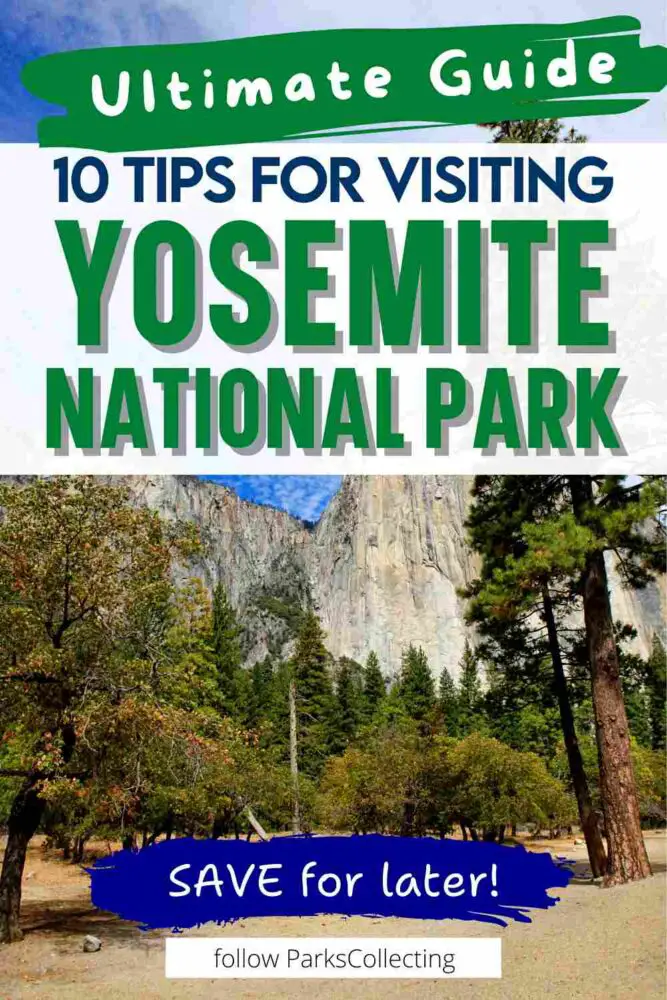
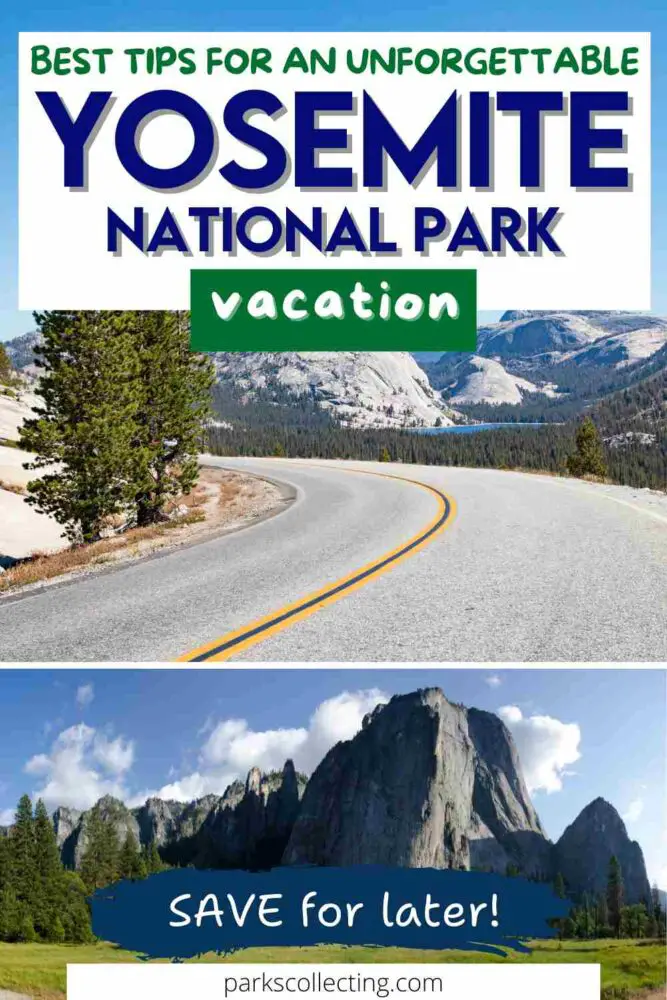
🛏️TOP HOTEL PICK: Check availability now
🚘FIND THE CHEAPEST CAR RENTAL: Search Discover Cars for the best deals
✈️FIND THE CHEAPEST FLIGHTS: Search Skyscanner for the best deals
🧳GET TRAVEL INSURANCE: Get insured with Travelex before you go
📱TAKE AN AUDIO TOUR: Buy an audio tour now
Table of Contents
1. Reserve Park Entry During Peak Season
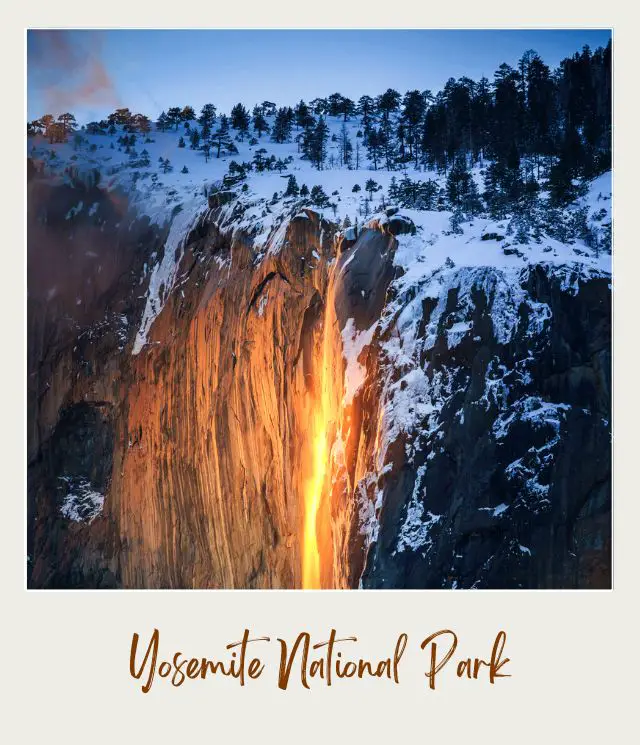
In the peak summer months (and for Firefall in February), Yosemite National Park requires visitors to have a reservation for park entry in addition to a park pass or entrance fee payment. This reservation system helps manage visitor capacity and protect the park’s delicate ecosystems.
The format of the system has changed each year.
➡️ Check my guide to the Yosemite National Park Ticketed Entry for more details.
You can make a reservation on recreation.gov.
2. Book Accommodations Well in Advance
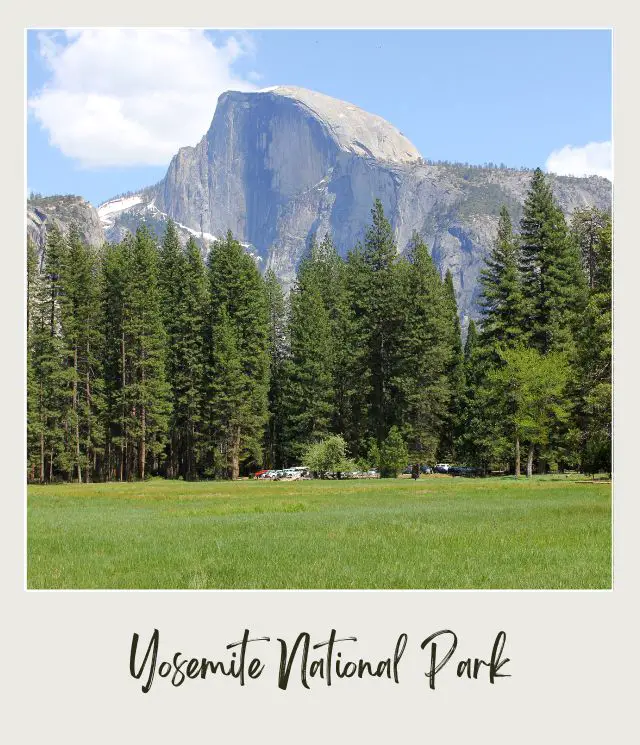
Yosemite is one of the most popular national parks in the country, and its accommodations often book up months in advance, especially during the busy summer season. If you plan to stay overnight inside the park, it’s essential to make your reservations as early as possible.
The park offers a range of lodging options, from rustic tent cabins to luxury hotel rooms. For a classic Yosemite experience, consider staying at The Ahwahnee, a grand hotel that has hosted presidents and royalty.
For a more budget-friendly option, try the Yosemite Valley Lodge or one of the park’s many campgrounds.
Yosemite National Park has 13 popular campgrounds, all of which are on a reservation system from April through October.
⛺ Only Upper Pines Campground is on reservations all year.
⛺ Upper Pines, Lower Pines, North Pines, Wawona, and Hodgdon Meadow campground reservations are released five months in advance on the 15th of each month.
⛺ Bridalveil Creek, Crane Flat, Tamarack Flat, White Wolf, Yosemite Creek, and Porcupine Flat campground reservations are released two weeks in advance on a rolling daily window.
⛺ Camp 4 reservations are released one week in advance on a rolling daily window (i.e., 7 days in advance of arrival date). Reservations required April 13 through October 27.
⛺ During winter, Camp 4, Wawona, and Hodgdon Meadow are first-come, first-served campgrounds, but can fill during holidays and weekends.
Visit www.recreation.gov to make a reservation. Grab your spot the second (and I mean second) they become available – they typically sell out instantly.
3. Use the Free Shuttle in Yosemite Valley
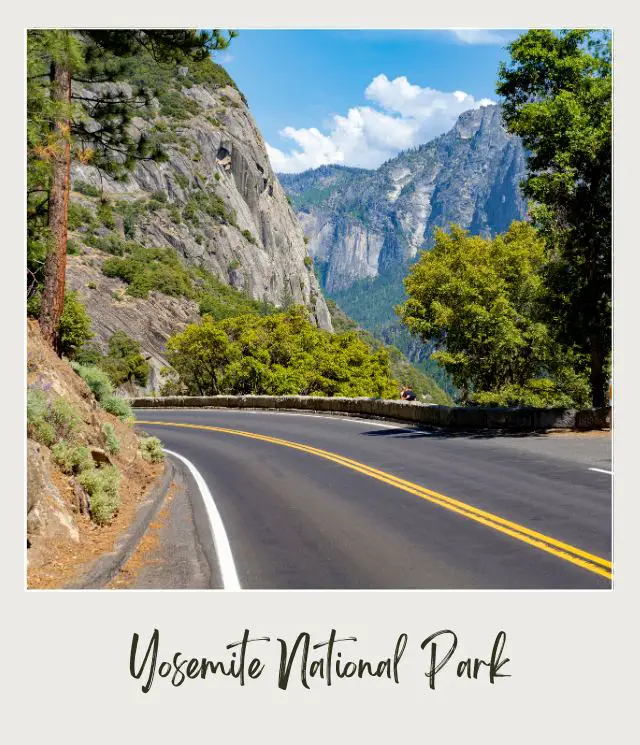
Yosemite Valley is the park’s most popular destination, and as a result, parking can be a challenge, especially during peak season. To avoid the hassle of circling crowded lots, take advantage of the park’s free shuttle bus system.
The shuttle runs year-round (with reduced service in winter) and stops at most major points of interest, including trailheads, lodges, and visitor centers.
You can park your car at one of the designated parking areas near shuttle stops and hop on and off the bus as needed throughout the day. Not only will this save you time and frustration, but it will also help reduce traffic congestion and protect the environment.
4. Check for Road Closures

Yosemite’s high-elevation roads, including the famous Tioga Road and Glacier Point Road, are subject to seasonal closures due to snow and ice. Tioga Road, which provides access to the park’s eastern entrance and popular destinations like Tuolumne Meadows, typically closes from November to May.
Before setting out, check the park’s website or social media for current Yosemite travel advice including road conditions and closure updates.
Even when roads are open, be prepared for poor driving conditions like snow, ice, and chain requirements in winter. If you’re not comfortable driving in these conditions, consider visiting during the summer months or taking a guided tour instead.
5. Consult the Yosemite Falls Webcam
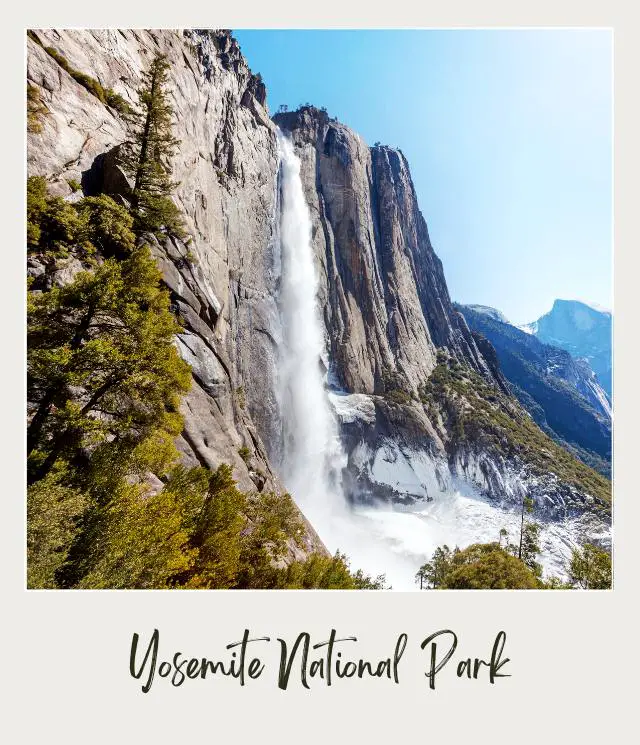
Yosemite Falls is one of the park’s most iconic attractions, drawing millions of visitors each year to witness its thundering cascade. However, the falls are highly seasonal and can dry up to a trickle by late summer, especially in drought years.
To avoid disappointment, check the Yosemite Falls webcam before your visit. This webcam is one of my favorite Yosemite tips and tricks. It provides a live view of the falls from Yosemite Valley and can give you a good idea of current water levels.
Peak flow typically occurs in May or June, fed by melting snow from the high country. By August or September, the falls may be reduced to a wispy ribbon or disappear entirely.
6. Carry Tire Chains in Winter
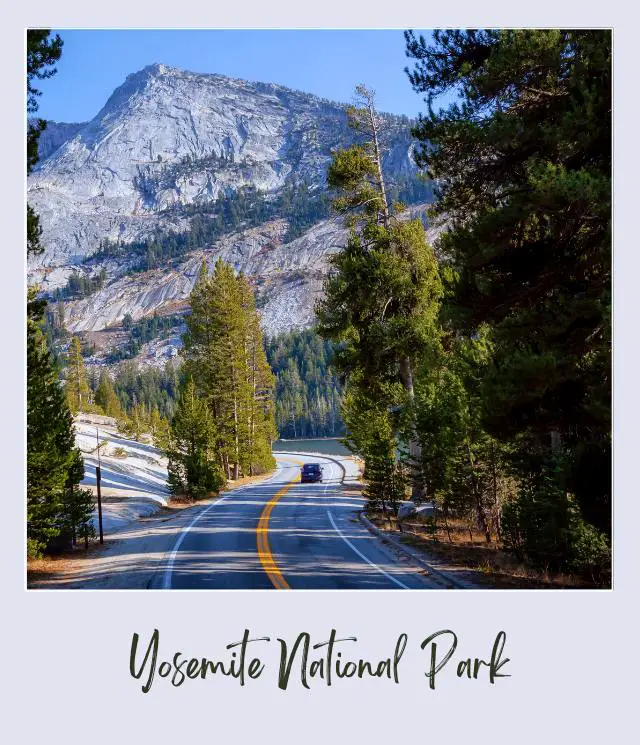
Winter vacations in Yosemite National Park require some extra planning. Several of the roads are closed and for those that are open, tire chains are a must-have safety item. Chain control areas are common on park roads from November through March, and all vehicles are required to carry chains, regardless of the weather forecast.
When chain controls are in effect, you’ll need to install the chains on your vehicle’s drive wheels to proceed safely. If you’ve never used tire chains before, practice installing them before your trip so you’re prepared when the time comes.
You can purchase or rent chains at many locations outside the park, but it’s best to have them with you to avoid any delays or closures.
7. Store Food Properly in Bear Country

Yosemite is home to hundreds of black bears, and while bear attacks on humans are rare, these wild animals are attracted to human food and can cause significant damage to cars and property in their search for a meal. To protect both bears and visitors, the park has strict regulations on food storage.
When camping or picnicking in the park, use the provided bear-resistant food lockers to store all food and scented items, including toiletries and pet food. If you’re staying in a hotel or cabin, keep food out of sight and secure in your room. Even if you’re just parked for a short time, don’t leave food in your car, as bears can easily break windows to get inside. You can get a proper bear storage bin here.
By properly storing your food, you’ll help keep Yosemite’s bears wild and avoid any unpleasant encounters.
8. Prepare for Afternoon Thunderstorms
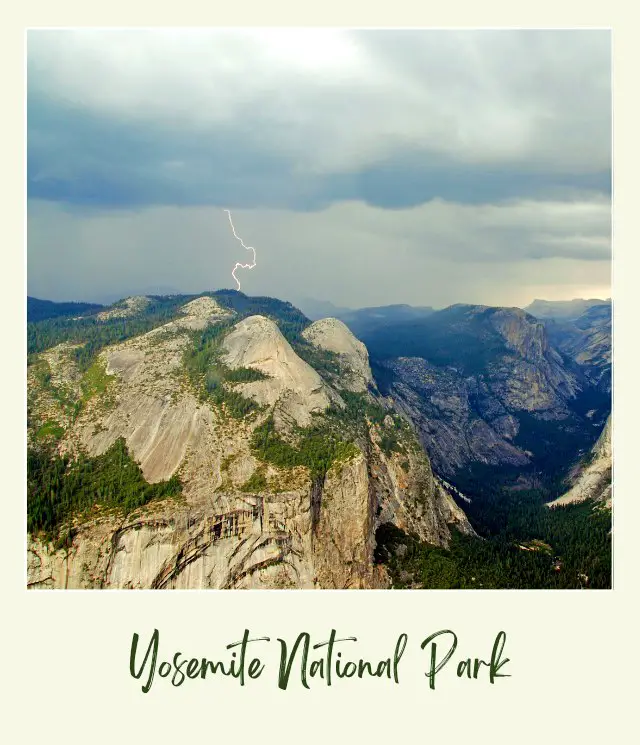
Yosemite’s high country is famous for its dramatic afternoon thunderstorms, which can bring heavy rain, hail, and lightning from late spring through early fall. These storms are most common in July and August and can pose a serious risk to hikers and climbers caught in exposed areas.
To stay safe, plan your outdoor activities for the morning hours and aim to be back below treeline by early afternoon. If you hear thunder or see lightning while on the trail, immediately seek shelter in a building or car. Avoid open areas, isolated trees, and bodies of water. Pack rain gear and warm layers, even if the forecast looks clear, as conditions can change quickly at high elevations.
9. Make Dining Reservations in Advance
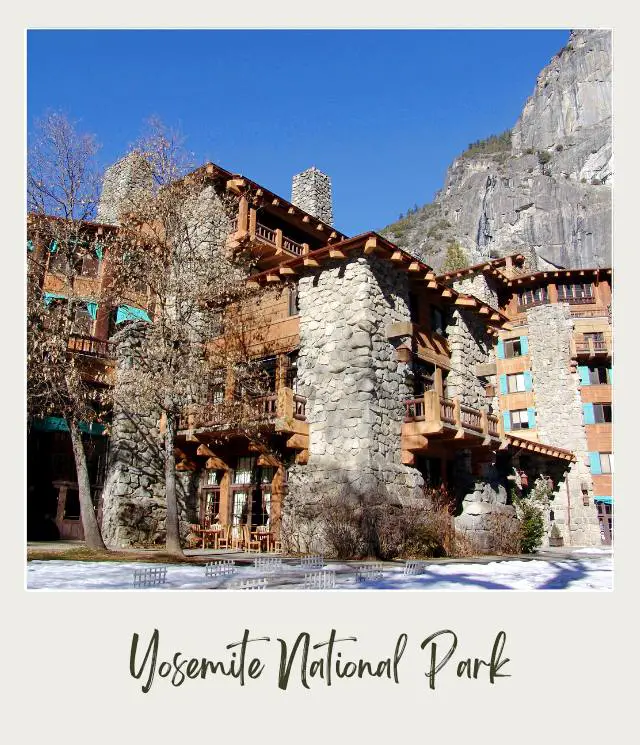
Yosemite’s dining options range from casual cafes to upscale restaurants, but many of the park’s most popular eateries book up quickly, especially during peak season. To ensure you get a table at your desired time and location, make reservations in advance whenever possible.
For a truly memorable dining experience, consider having dinner at The Ahwahnee Dining Room, which offers gourmet cuisine in a stunning historical setting. Reservations are strongly recommended and can be made up to 90 days in advance online or by phone.
Other popular spots like the Mountain Room Restaurant and the Wawona Hotel Dining Room also accept reservations, so plan ahead to avoid disappointment.
10. Bring Binoculars for Wildlife Watching

Yosemite is home to an incredible diversity of wildlife, from black bears and mule deer to peregrine falcons and Sierra Nevada bighorn sheep. While some animals like bears and coyotes are relatively easy to spot with the naked eye, others require a bit more effort to observe.
To get the most out of your wildlife watching experience, bring a pair of binoculars or a spotting scope. These tools will allow you to get a closer look at animals from a safe distance without disturbing them.
Binoculars are also useful for watching climbers on Yosemite’s famous rock faces like El Capitan, where tiny specks of color can be seen moving up the sheer granite walls. Just remember to never approach or feed wild animals, no matter how cute or harmless they may appear.
➡️ These Vortex Diamondback Binoculars are my top pick for best binoculars for the money. You can read my full buying guide here.
Subscribe to daily national parks planning tips, travel inspiration and trip ideas and I’ll send you a free PDF of this Guide:
10 Tips For Visiting Yosemite National Park
Enjoy your Yosemite vacation!
More Planning Resources for Yosemite National Park
⭐ Yosemite National Park Guide
⭐ Planning A Trip to Yosemite National Park: 7 Mistakes to Avoid
⭐ Guide to Yosemite National Park Ticketed Entry
⭐ How To Get To Yosemite National Park
⭐ The Airports Closest To Yosemite National Park
⭐ The Closest Airport to Yosemite National Park
⭐ When is The Best Time To Visit Yosemite National Park?
⭐ Visiting Yosemite National Park: What To Expect Throughout the Year
⭐ 10 Fun Facts About Yosemite National Park
⭐ Vacation Rentals Near Yosemite National Park
Do you have any other travel tips for Yosemite National Park? I’d love to hear about them. Join my private Facebook group National Parks Collectors and comment and let me know (you can also pick up extra planning tips, share your photos and stories with other national park lovers and more).
If you liked these Yosemite travel tips, Pin It to your Yosemite National Park board!


💡 Are you just starting to think about taking a national parks trip? Get Inspiration
‼️ Are you looking for helpful tips for visiting US national parks? Read articles that share useful tips on a range of national-park related issues
💻 Are you starting to plan a trip to Yosemite National Park? Read my Guide to Yosemite National Park
🛏️ Are you looking for a place to stay near Yosemite National Park? Find a vacation rental near Yosemite National Park
💲 Are you ready to book your trip? Use these Planning and Booking Resources
📖 Do you want to read a book about US national parks? Check out my Recommended Reading Lists
About the Author
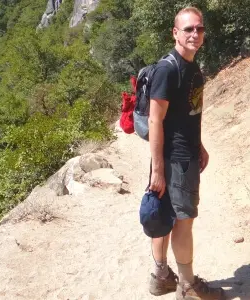
James Ian is a national park, camping and hiking expert.
He has dedicated his life to travel, visiting more than 80 countries, all 7 continents and most of the national parks in the United States. With over 35 years experience in the travel industry, James has worked on cruise ships, at resorts and hotels, and as a travel planner who’s helped hundreds of people plan successful trips to US national parks.
Based on his experience visiting our national parks multiple times, in-depth research and expertise as a travel planner, James has published detailed itineraries for many of the major national parks in the US. These itineraries, as well as in-depth park guides, and other resources will help you have your own incredible trip to US national parks without stress and hassle.
As a national park expert, James has contributed to many publications, including USA Today, Newsweek, Time Business News, Savoteur, Best Trip, and Wired.
I’m a member of the Amazon Services LLC Associates Program. As an Amazon Associate I earn from qualifying purchases.
